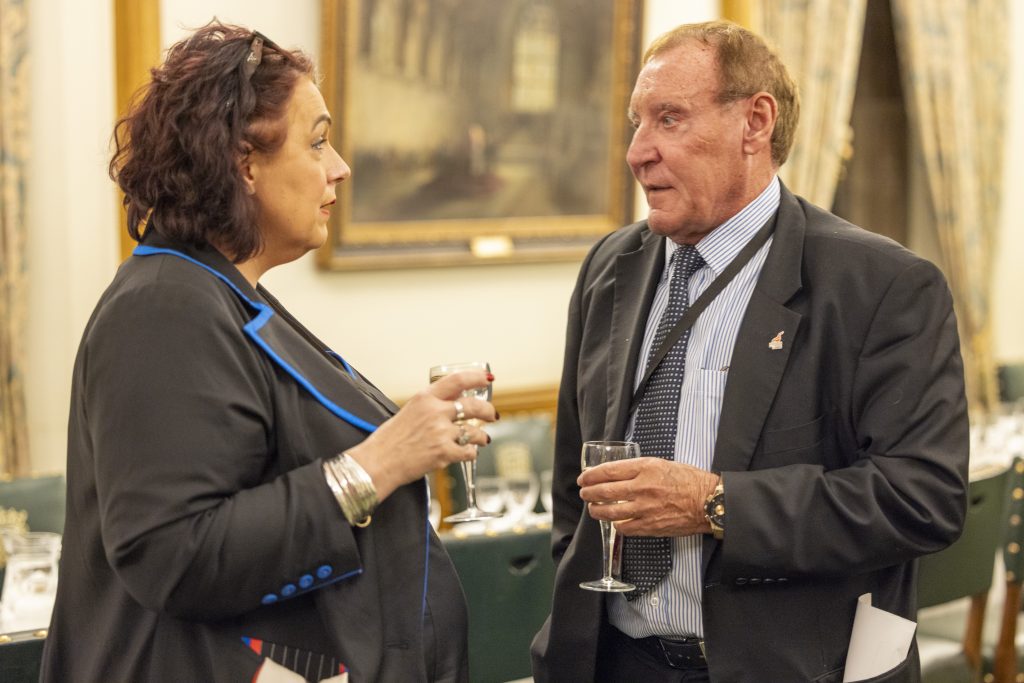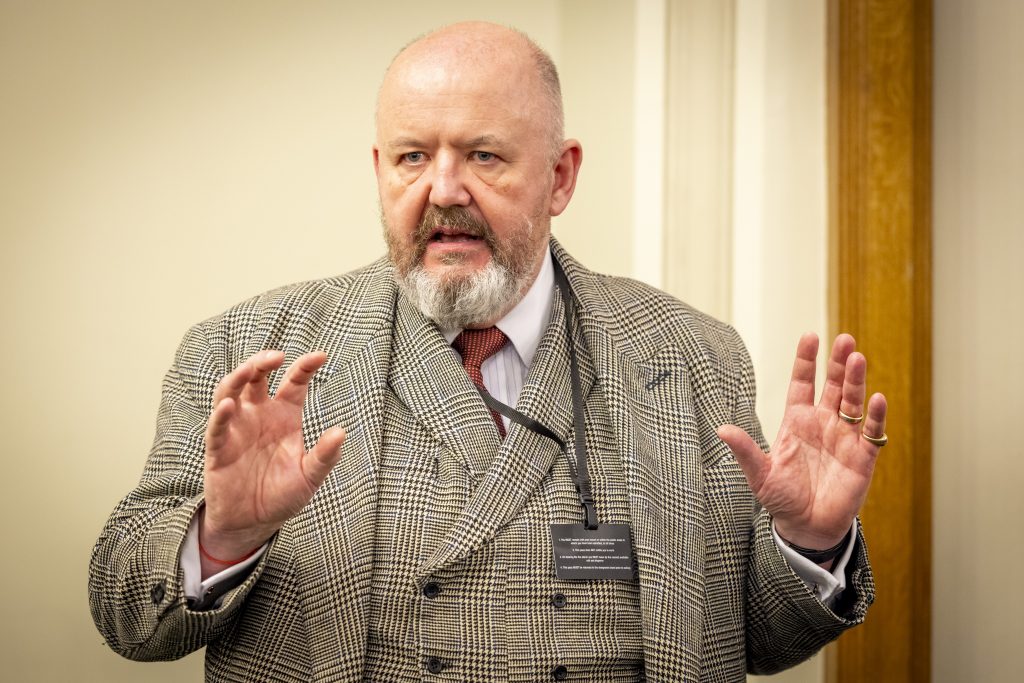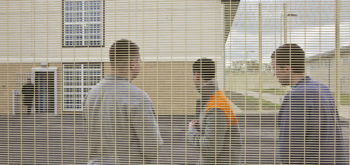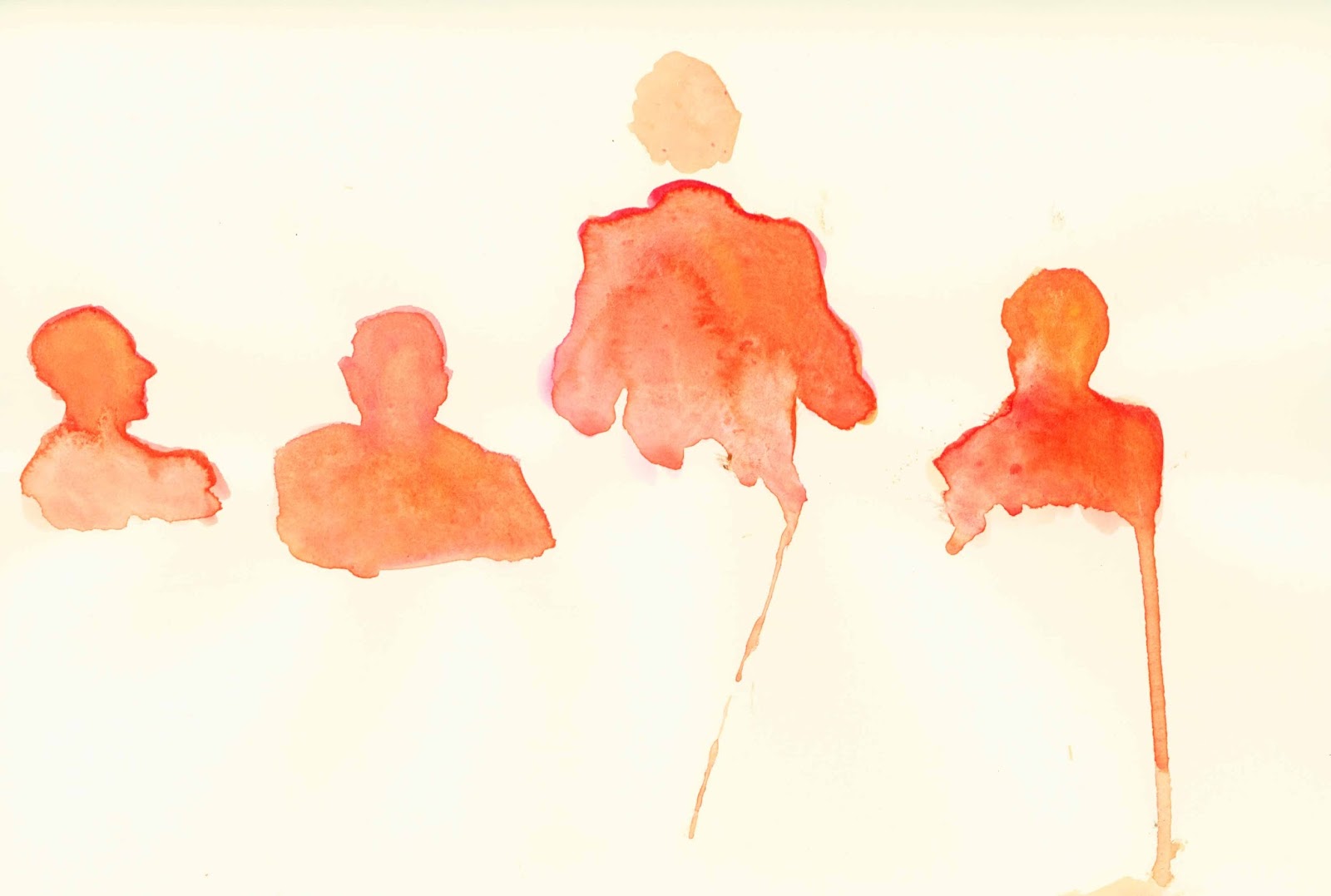MPs are to due to debate proposals today to tighten up the controversial law on joint enterprise limiting its application to those who make a ‘significant contribution’ to a crime. Kim Johnson, Labour MP for Liverpool Riverside, is presenting the Bill which would ‘allow us to separate those who should be long-term prisoners from those who should not’. ‘It also complements recent Government measures to reduce the prison population,’ she added.
The Supreme Court ruled in 2016 that the law had indeed taken a ‘wrong turn’ for over 30 years in the case of R v Jogee (as has been reported on the Justice Gap), and it was widely anticipated that there would be successful appeals in the wake of the landmark ruling. So far only one conviction has been overturned and there is evidence that the police and prosecution have re-committed to using joint enterprise despite growing concerns over its legitimacy as well as evidence of racist targeting.

Lord Tony Woodley and Felicity Gerry. Pic: Andy Aitchison
Kim Johnson points out that since the 2016 ruling a new problem has emerged as a result of juries ‘deliberately not told to consider the contribution a person made to the crime’. It was a point made last week at a meeting of the All-Party Parliamentary Group on Miscarriages of Justice in a speech delivered by the barrister Felicity Gerry KC. She argued that there was now a second category of prisoners who had been wrongly caught up in the ‘dragnet’ of joint enterprise – those who were convicted post-Jogee. Gerry was the barrister who represented Ameen Jogee in the 2016 case. Barry Sheerman MP, chair of the APPG, has also introduced proposed legislation, the Criminal Appeal (Amendment) Bill, to address the lack of progress made by the courts in overturning convictions in the wake of the Jogee ruling. The APPG is aplnning to launch a Westminster Commission on Joint Enterprise chaired by Lord Tony Woodley early in then new year.
‘This absence of a legal direction to a jury risks convicting people who make no significant contribution to a crime,’ Felicity Gerry explained. ‘Unfortunately, we now convict – and probably have done for quite a long time – people who make no significant contribution to a crime.’ She cited a recent cases in the Court of Appeal (Fiaz). ’My client was in a car parked around the corner while his friends went in to a flat to snatch some cannabis. He wasn’t the driver. He was in the back of the car – local residents saw him tapping his fingers on the roof waiting,’ Gerry recalled at the event in the House of Commons. There was a fatal confrontation between one of the men who went into the house with a knife and the householder who unexpectedly produced a baseball bat. ‘My client made no contribution to that killing,’ the barrister said. ‘He may well be guilty of attempted theft, or conspiracy to steal cannabis, but he made no significant contribution to the killing.’
‘Look, we need to put a foot on the break and distinguish between people who make a significant contributions to crime and those who do not. Otherwise what we do is risk convicting people who make no significant contribution to the crime. That’s the risk, unless you say to a jury: “Was he there? Did he do acts to demonstrate the intention to assist or encourage, and did those acts make a significant contribution to the crime?” Unless you tell the jury that, you’re risking convicting anybody, for example, on CCTV in a violent disorder – they might be a guilty violent disorder, but not necessarily guilty of murder.’
Felicity Gerry KC
She said that the Court of Appeal rejected her arguments. ‘So we have what’s become known as a “dragnet” convicting young people, particularly young people of colour, who are framed by the music that they listen to, their social media, the colour of their associates. Let me tell these kids don’t pay for the rugby team.’
According to data from a Crown Prosecution Service pilot study published last month Black people are 16 times more likely to be charged under JE than white people-published. Campaigners have been calling for data on joint enterprise convictions for over ten years and it was only released following the threat of legal action by JENGbA and Liberty earlier this year.
Kim Johnson explained that she became aware of joint enterprise after watching Jimmy McGovern’s shocking and powerful drama Common in 2014. ‘Since being elected in 2019, I’ve met with JENGbA a grass root campaign set up in 2010, who are in contact with over 1,000 families of people imprisoned as a result of joint enterprise laws, with a disproportionate number of young black teens – who have been wrongly convicted under a method of joint enterprise that was used to convict people who foresaw a crime but did not intend to join in. The more I speak with families and learn about joint enterprise the more outraged I become.’
The proposed legislation – the Joint Enterprise (Significant Contribution) Bill – has been drafted by legal experts for JENGbA.
CCRC: ‘A searing lack of curiosity, inquisitiveness and ambition’

Ed Henry KC: Pic: Andy Aitchison
The barrister who acted for a man who spent 20 years trying to clear his name whose convictions was overturned over the summer has accused the miscarriage of justice watchdog of ‘a searing lack of curiosity’. Andrew Malkinson spent two decades trying to clear his name. It has since come to light that the CCRC was aware of the DNA evidence that would ultimately exonerate him at the time of his first application in 2009. Ed Henry KC called his case ‘a classic emblematic miscarriage of justice’ which highlighted the systemic problems at the Criminal Cases Review Commission.
As a result of the furore following the quashing of his conviction, there are now two inquiries into the CCRC – one by the watchdog body itself and one commissioned by the justice minister Alex Chalk who recently appointed Sarah Munro KC to chair then investigation.
Speaking to the APPG meeting, Ed Henry KC said that Andrew Malkinson was ‘arrested on a hunch’. ‘His only involvement with the police was that he came across two police officers about a month before and they, simultaneously on hearing of the description of the alleged rapists, said that’s Andy Malkinson.’
‘Nothing fitted,’ Henry continued. ‘His accent didn’t fit. His height didn’t fit. His hairless chest didn’t fit the description of the perpetrator.’ The barrister said that the case ‘should have been a blue ticket, a wonderful result for the CCRC’; however he went on to list the group’s failings in relation to the case.
The barrister explained that there had been an application made by Malkinson in 2009 to the CCRC. ‘In 2007, there had been a national review of DNA because the Forensic Science Service was concerned that there may had been distorted results as a result of a concept known as “inhibition” which would have meant that incomplete profiles were retained. Had the CCRC taken Andy’s complaint seriously at that time, they could have brought a review, because in 2007, the Forensic Science Service found DNA which could not have come from the victim, which could not have come from her partner, which could not have come from Andrew Malkinson and could not have come from anyone who was in contact with her that terrible night she was attacked. The CCRC finessed it away.’
The KC explained that the CCRC said that the DNA ‘which the CPS, no less, said was in a crime-specific area counted for nothing, that it was entirely speculative, and it could have been deposited by anyone’ and insisted that they needed to have the identity of a perpetrator before they would act. Such an assertion, Henry claimed, ‘contradicted their own guidance, it contradicted the case law in the case of Hodgson, where the Court of Appeal had quashed a murder conviction because there was DNA in a crime-specific area that did not match the convicted appellant’.
Henry explained ‘it got worse’. ‘The man who undoubtedly did perpetrate this crime was actually added to the national DNA database in 2012.’ The CCRC could have then pushed for ‘speculative searches, which they would be entitled to do’ and which, Henry argued, would have ‘revealed the link in 2012’. ‘That would have ended Andy’s ordeal 11 years before it eventually came to a conclusion.’
‘What was the next thing that the CCRC failed to do?’ the barrister continued. ‘They failed to investigate the Greater Manchester Police file.’ Had they investigated it, Henry reckoned, ‘they would have discovered two things’. Firstly, they would have discovered that the two eyewitnesses to the attack – Michael Seward and Beverley Craig – were both ‘malleable and arguably in the hands of the Greater Manchester Police’ . The only reason Seaward, ‘an incorrigible heroin addict’, became a witness was ‘because of the commission of a criminal offence, which was finessed and airbrushed out of his witness statement’. ‘The non disclosure of their previous convictions was upheld by the court as not simply arguable, but a determinative ground of appeal that rendered the conviction unsafe – yet the CCRC, in its eventual referral to the Court of Appeal, didn’t consider that that was anything more than a makeweight and they didn’t refer it as an individual ground.’
Secondly, Henry said the CCRC would have found is that there were photographs on the Greater Manchester Police file which showed that the victim was telling the truth when she said she scratched her attacker with her left hand, rendering a deep gouge to his right cheek. ‘Andy Malkinson did not have a deep gash in his right cheek when he was seen less than 24 hours after the offence.’
The barrister attacked the CCRC for what he called its ‘searing lack of curiosity, inquisitiveness and ambition’. ‘I’m afraid it really does reveal a lack of investigative rigour by the CCRC,’ he said. ‘If they had investigated this case properly in 2009 – and if they had not resisted the attempts by (the legal charity) APPEAL to get at the material – then this case could have ended in a very, very different way. And it could have ended without Andy spending 10 years unnecessarily in prison.’








